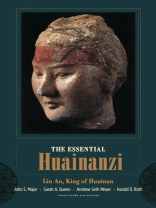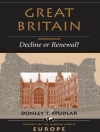Compiled in the second century B.C.E, the Huainanzi clarifies a crucial period in the development of Chinese conceptions of the cosmos, human nature, and the social order. Outlining ‘all that a modern monarch needs to know, ‘ the text emphasizes rigorous self-cultivation and mental discipline, attributing successful rule to a balance of broad knowledge, diligent application, and penetrating wisdom.
In 2010, the editors of this volume completed the first complete English-language translation of the Huainanzi, opening exciting new pathways in the study of philosophy, Asian studies, political science, and Asian literature. This abridgement contains essential selections from each of the Huainanzi’s twenty-one chapters and adds a new introduction and chapter descriptions. The text represents a remarkable synthesis of Daoist classics, such as the Laozi and the Zhuangzi; works associated with the Confucian tradition, such as the Changes, the Odes, and the Documents; and a range of other foundational philosophical and literary works, from the Mozi to the Hanfeizi. The abridgement preserves the Huainanzi’s special rhetorical features, such as its parallel prose, verse, and unique compositional techniques. For decades, Western scholars overlooked the Huainanzi’s sophisticated structure, creative content, and rich historical value, yet all that changed with the translation of the full text. Designed for classroom use and general readers, The Essential Huainanzi continues to increase awareness of this brilliant work and change our understanding of early Chinese history.
Tabela de Conteúdo
Contents
Sketch of Early Chinese History, with Special Reference to the Huainanzi
Introduction
1. Originating in the Way
2. Activating the Genuine
3. Celestial Patterns
4. Terrestrial Forms
5. Seasonal Rules
6. Surveying Obscurities
7. Quintessential Spirit
8. The Basic Warp
9. The Ruler’s Techniques
10. Profound Precepts
11. Integrating Customs
12. Responses of the Way
13. Boundless Discourses
14. Sayings Explained
15. An Overview of the Military
16 and 17. A Mountain of Persuasions and A Forest of Persuasions
18. Among Others
19. Cultivating Effort
20. The Exalted Lineage
21. An Overview of the Essentials
Glossary of Personal Names
Brief Bibliography
Index
Sobre o autor
John S. Major taught East Asian history at Dartmouth College from 1971 to 1984. Since then—as an independent scholar, writer, editor, and lecturer—he has published many scholarly and general-interest books on Asia, including (with Constance A. Cook) Defining Chu: Image and Reality in Ancient China and (with Roger V. Des Forges) The Asian World, 600–1500. Sarah A. Queen is professor of history at Connecticut College. She is the author of From Chronicle to Canon: The Hermeneutics of the Spring and Autumn, According to Tung Chung-shu, and the coeditor (with Michael Puett) of The Production of an Early Han Text: Studies in the Huainanzi. She and John S. Major are completing a full translation of the Chunqiu fanlu, attributed to Dong Zhongshu.Andrew Seth Meyer is associate professor of history at Brooklyn College and the author of The Dao of the Military: Liu An’s Art of War.Harold D. Roth is professor of religious studies and East Asian studies at Brown University and the author or editor of six books and more than forty-five scholarly articles. His best known work is Original Tao: Inward Training and the Foundations of Taoist Mysticism.












